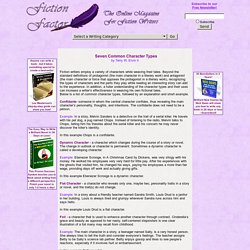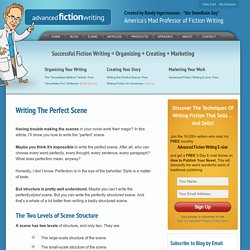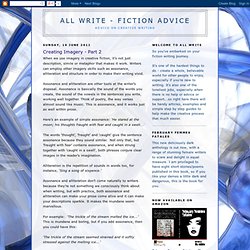

50 of the Best Websites for Writers. There are tons of reference sites on the web that can help you find a job or write a poem, essay or story.

Here is a list of the best 50 websites for writers. Reference Websites Merriam-Webster Online - Merriam Webster is the perfect place to look up words and find information. The site offers a dictionary, thesaurus, encyclopedia, podcasts, word games and a lot of other things that may be of interest to writers and word-lovers. Bartleby - This site is good if you need a quote or if you want free access to encyclopedias, dictionaries, thesauri, and other reference books. General Writing Websites Writer's Digest - Probably one of the best all-around websites for writers, Writer's Digest offers information on writing better and getting published. Fiction Writing Websites About.com - About.com publishes a Guide to Fiction Writing with general information about fiction writing and a number of community forums for both current and aspiring writers.
Nonfiction Writing Websites. How To Write A Novel Using The Snowflake Method. 11 Stupidest Writing Mistakes - SalesHQ. Sales Tips >> Browse Articles >> Proposals and Presentations Professional writers often worry that their work is unnecessary.

After all, can’t anyone with even a basic education write? The answer: no, they can’t. Even college graduates don’t seem to be learning composition basics. Five Habits to Avoid in Fiction Writing. Common Cliches in Writing. It’s not enough to love our story ideas.

We need to weigh their suitability as subjects for fiction, and then figure out how to go about making use of them. This means steering clear of cliché and its sappy cousin—melodrama. Here are 10 tips to help you do just that. (Note: This article is about cliched themes, not phrases. If you want to learn about cliche phrases that all writers should avoid, check out these cliche examples). Common Themes in Literature. 7 Keys To Write the Perfect First Line of a Novel. Point of View and Voice. Seven Common Character Types. Seven Common Character Types by Terry W.

Ervin II Fiction writers employ a variety of characters while weaving their tales. Beyond the standard definitions of protagonist (the main character in a literary work) and antagonist (the main character or force that opposes the protagonist in a literary work), recognizing the types of characters and the parts they play while reading an interesting story can add to the experience. 8 Ways to Write Better Characters. The very first novel I, aged 20-something, wrote, is unpublished and will stay that way.

An ensemble coming-of-age story of four teenagers, its weaknesses are legion: tame story line, thin action, unimaginatively rendered settings, hackneyed themes (though I will say the dialogue wasn’t bad). Having now published seven novels, I look back on that manuscript and realize that underlying the shortcomings I just mentioned lies its principal flaw: poor character development.
6 Ways to Write Better Bad Guys. The Emotional and Psychological World of You and Your Characters. By Rachel Ballon "Only connect the prose and the passion,and both will be exalted.

" - E. M. Forster Emotions are the lifeblood of characters and of stories. Without emotional characters, you are just writing events, but you're not drawing your audience into your story. Avoid Overactive or Inactive Supporting Characters When Writing A Novel. One of the most common plot problems writers face is mistaking minor characters and subplots for the main character and primary plot.

In the following excerpt, Joseph Bates, author of The Nighttime Novelist, discusses overactive or inactive characters and subplots and how they can impact your story. Overactive or Inactive Supporting Characters. Writing The Perfect Scene: Advanced Fiction Writing Tips. Having trouble making the scenes in your novel work their magic?

In this article, I’ll show you how to write the “perfect” scene. Maybe you think it’s impossible to write the perfect scene. Creating Imagery - Part 1. Often we come across people who have read a great novel and comment that it was full of imagery.

But what does that man exactly? Writers use imagery to convey a sense of scenes and characters. It is used as a support tool to enhance description, to engage the reader on a deeper level with their writing, to involve the reader to the kind of level where they imagine themselves right there within the scene. Imagery is a key aspect of fictional writing, it allows the writer to connect with the reader, but it also connects the reader to the story on many different levels. Creating Imagery - Part 2. When we use imagery in creative fiction, it’s not just description, simile or metaphor that makes it work.

Writers can employ other imagery skills such as assonance, alliteration and structure in order to make their writing vivid. Assonance and alliteration are other tools at the writer’s disposal. Assonance is basically the sound of the words you create, the sound of the vowels in the sentences you write, working well together. Think of poetry, the way verses almost sound like music. How to Use Imagery Effectively.
Create Powerful Imagery in Your Writing. Article: Beware the Violins - How to Avoid Melodrama in Your Writing ~ RukhsanaKhan.com. By Rukhsana Khan For the beginning writer, searching to write a poignant and dramatic piece, there is always the possibility of overshooting the target. Instead of achieving poignancy they get something that’s maudlin. How to Make Readers Feel Emotion. On January 30th, 2011 by Fiction Editor Beth Hill and last modified on February 8, 2011 I wrote an article on the importance of creating emotions in readers, but I’ve noticed that writers are looking for specifics on how to accomplish that.
So, this article complements that first one, presents practical tips on how to stir the reader’s emotions. Readers like to be touched, moved, by story. Emotional Scenes Without Melodrama. By Anne Marble Emotional scenes are, of course, crucial to romances. Emotion without Sentiment c. 2007 by Alicia Rasley. Emotion Is Physical by Alicia Rasley. 3 Tips for Writing Heavy Emotional Scenes. How Do You Bridge The Gap Between Two Cool Moments In Your Novel? The 10 Types of Writers' Block (and How to Overcome Them)